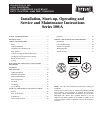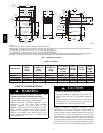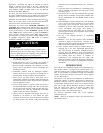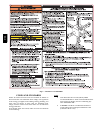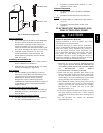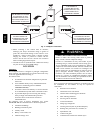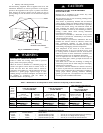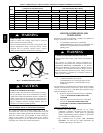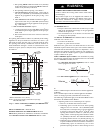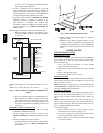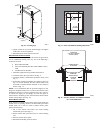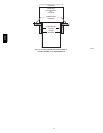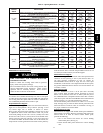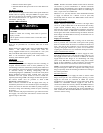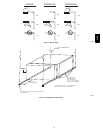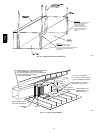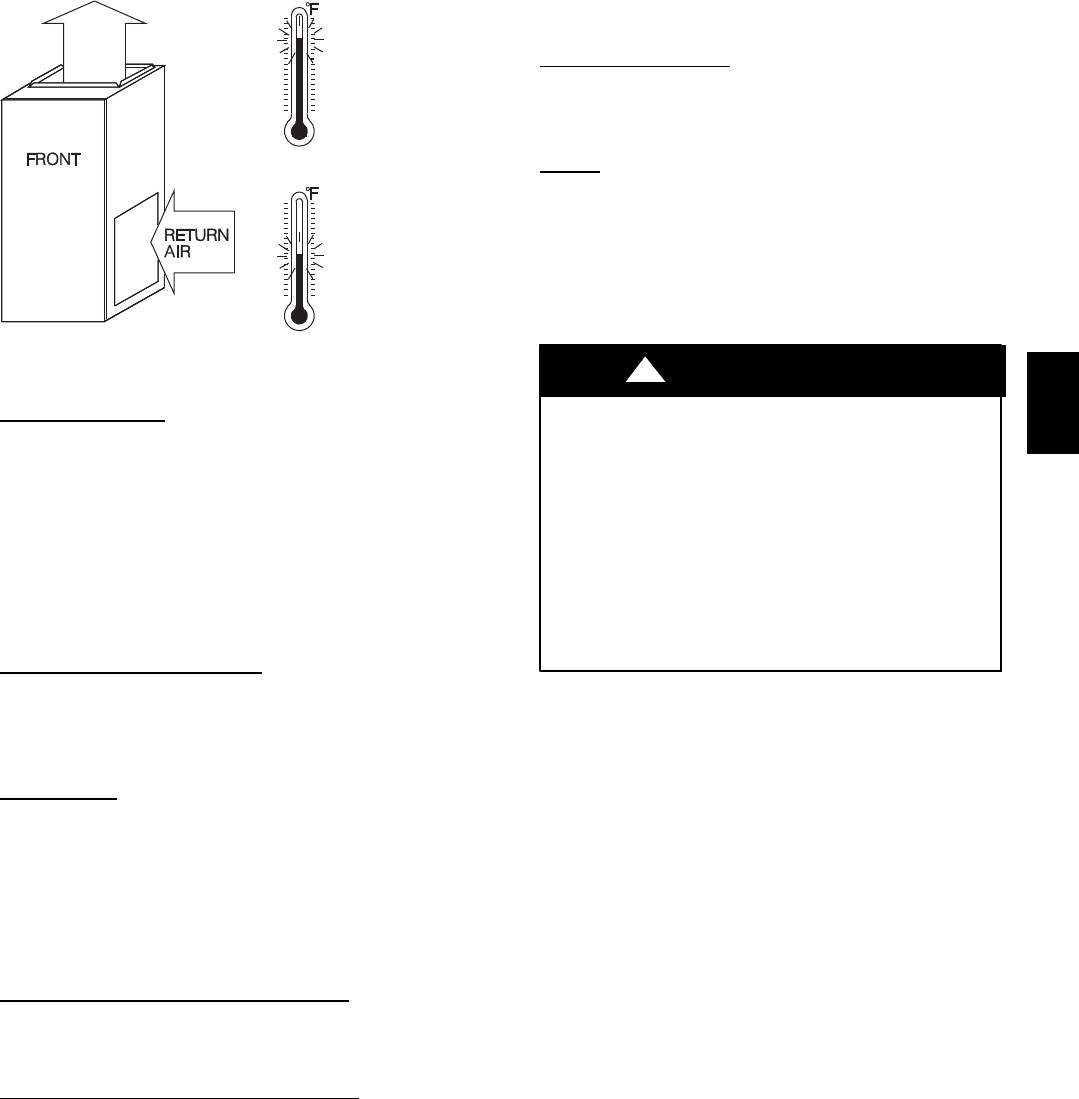
5
Min 60ºF / 16ºC
Max 85ºF/ 29ºC
A02055
Fig. 3 -- Return Air Temperature
General
Installation
S US: Current edition of the NFGC and the NFPA 90B.
For copies, contact the National Fire Protection
Association Inc., Batterymarch Park, Quincy, MA
02269; (www.NFPA.org) or for only the NFGC,
contact the American Gas Association, 400 N. Capitol
Street, N.W., Washington, DC 20001 (www.AGA.org).
S CANADA: CAN/CSA--B149.1--05. For a copy,
contact Standard Sales, CSA International, 178
Rexdale Boulevard, Etobicoke (Toronto), Ontario,
M9W 1R3 Canada.
Combustion and Ventilation
Air
S US: NGFC NFPA54/ANSI Z223.1 --2006 Section 9.3,
Air for Combustion and Ventilation.
S CANADA: Part 8 of CAN/CSA--B149.1--05, Venting
Systems and Air Supply for Appliances.
Duct
Systems
S US and CANADA: Air Conditioning Contractors
Association (ACCA) Manual D, Sheet Metal and Air
Conditioning Contractors National Association
(SMACNA), or American Society of Heating,
Refrigeration, and Air Conditioning Engineers
(ASHRAE) 2005 Fundamentals Handbook Chapter 35
or 2004 HVAC Systems and Equipment Handbook
Chapters 9 and 16.
Acoustical Lining and Fibrous Glass
Duct
S US and CANADA: current edition of SMACNA and
NFPA 90B as tested by UL Standard 181 for Class I
Rigid Air Ducts
Gas Piping and Gas Pipe Pressure T
esting
S US: NFGC NFPA54/ANSI Z223.1 --2006; chapters 5,
6, 7, and 8 and National Plumbing Codes.
S CANADA: CAN/CSA--B149.1--05 Parts 4, 5, and 6
Appendices A, B, E, and H.
Electrical
Connections
S US: National Electrical Code (NEC) ANSI/NFPA
70--2008.
S CANADA: Canadian Electrical Code CSA C22.1.
V
enting
S US: NFGC NFPA 54 / ANSI Z223.1 --2006; Chapters
12 and 13.
S CANADA: CAN/CSA--B149.1 --05 Part 8 and
Appendix C.
ELECTROSTATIC DISCHARGE ( ESD)
PRECAUTIONS PROCEDURE
FURNACE RELIABILITY HAZARD
Improper installation or service of furnace may cause
premature furnace component failure.
Electrostatic discharg e can affect electronic components.
Follow the Electrostatic Discharge Precautions Procedure
listed below during furnace installation and servicing to
protect the furnace electronic control. Precautions will
prevent electrostatic discharges from personnel and hand
tools which are held during the procedure. These
precautions will help to avoid exposing the control to
electrostatic discharge by putting the furnace, the control,
and the person at the s ame electrostatic potential.
CAUTION
!
1. Disconnect all power to the furnace. Multiple disconnects
maybe required. DO NOT TOUCH THE CONTROL OR
ANY WIRE CONNECTED TO THE CONTROL PRIOR
TO DISCHARGING YOUR BODY’S
ELECTROSTATIC CHARGE TO GROUND.
2. Firmly touch the clean, unpainted, metal surface of the
furnace chassis which is close to the control. Firmly touch
the clean, unpainted, metal surface of the furnace chassis
which is close to the control. Tools held in a person’s hand
during grounding will be satisfactorily discharged.
3. After touching the chassis, you may proceed to service the
control or connecting wires as long as you do nothing to
recharge your body with static electricity (for example;
DO NOT move or shuffle your feet, do not touch
ungrounded objects, etc.).
4. If you touch ungrounded objects (and recharge your body
with static electricity), firmly touch a clean, unpainted
metal surface of the furnace again before touching control
or wires.
5. Use this procedure for installed and uninstalled
(ungrounded) furnaces.
313A



